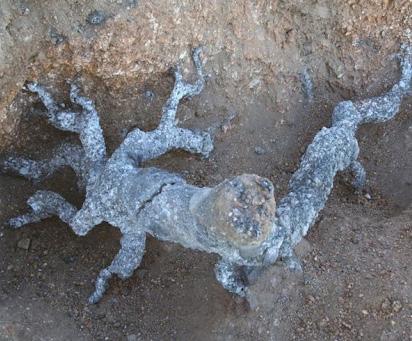
3 minute read
LIGHTNING
from AEOLIAN - AADRL
by Salim Hilles
Using The Lightning To Create A Glass Architecture
The natural phenomena of lightning was an inspiration of the research, particularly the action, when lightning strikes the ground, it is hot enough to fuse silica sand and clay together into fulgurites: shafts of glass produced by lightning. The natural process of solidification of sand brought another way of fabrication with sand. Initially the research was divided into to directions. One opportunity was to harvest the lightning to produce glass structures another was to imitate it with artificial tools to melt sand into glass. As the primarily direction was the glass production way, the lightning harvesting idea was left behind. Therefore the research about lightning is not in the main chapter of the project.
Advertisement
Initially, a faint luminous process descends in a downward-branching pattern in regular distinct steps, typically 30 metres (100 feet) in length, though they can range from 10 to 100 metres (33 to 330 feet). The time interval between steps ranges from 10 to 50 microseconds (millionths of a second). Carrying currents on the order of hundreds to thousands of amperes, the stepped leader propagates toward the ground at an average velocity of 1.5 × 105 metres per second. Diameter estimates for the stepped leader range from a few centimetres to a few metres. The current-carrying core has a diameter on the order of 1 or 2 cm (0.4 or 0.8 inch), and photographic measurements indicate that a corona sheath of electric charge with a diameter of 1 to 10 metres (3 to 33 feet) surrounds the core.
As the stepped leader nears the ground, approximately five coulombs of charge have been deposited along the channel, inducing an opposite charge on the ground and increasing the electric field between the leader and the point to be struck. An upward discharge starts at the ground, and rises to meet the stepped leader about 15 to 50 metres (50 to 160 feet) above the surface. At this moment of junction the cloud is short-circuited to the ground and a highly luminous return stroke of high current occurs. Portions of the stepped leader that have not reached the ground become the branches of the return stroke, and charge on the branches flows into the main channel. Peak temperatures in the channel are on the order of 30,000 °C
Fulgurites Petrified Lightning
When lightning strikes the ground, it is hot enough to fuse silica sand and clay together into fulgurites: shafts of glass produced by lightning. The word fulgurite comes from fulgur, the Latin word for thunderbolt. Glass can be made by heating sand, which is mostly silicon dioxide, or quartz. The lightning bolt vaporizes the sand it encounters, generating a hollow tube. As the heat moves outward from the entry hole, the sand grains melt and form a smooth inner surface. As the heat moves further outward, it fuses grains of sand. The outside is rough, looking like petrified lightning when the fulgurite has branching assemblages. But the inside is hollow and smooth. The composition of the sand determines the colour of the fulgurite.
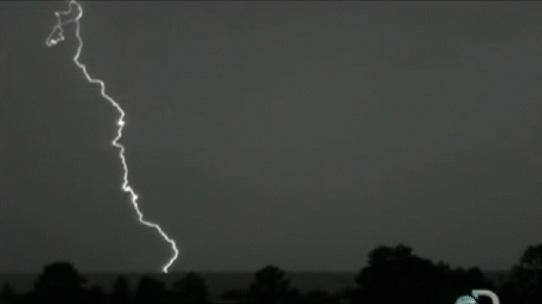

Lightning Simulation


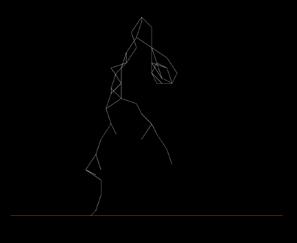
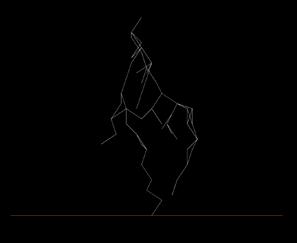
The simulation was done as research on lightning formation. The field of points was charged to be amplifying upwards. Then the points were randomised in a certain radius to have a random charged field of points but in general with an increasing charge upwards. The process of lightning starts from one point on the top and finds the points with the lowest charge in a certain radius. It can select several points to move on and thus the branching occurs. A branch can stop developing if it will not find a smaller charge.
After simulating the lightning process the goal is to harvest the lightning. The idea is to attract the lightning with the grid of pillars, as the lightning is attracted by lonely pointiness objects. The pillars with less amount of charge are introduced to the simulation. And the simulation stopped when the lightning reached the pillar.
A set of simulations with different randomisation of charges was executed to archive visual similarity with lightning and get the most suitable input conditions.

The same conditions of charges were examined for the simulation of the attraction of lightning to the grid of pillars.
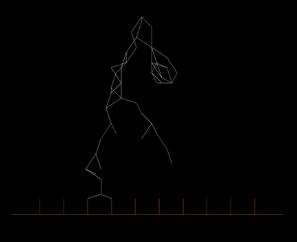
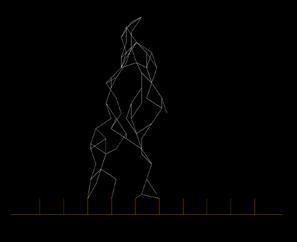
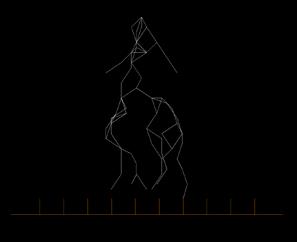
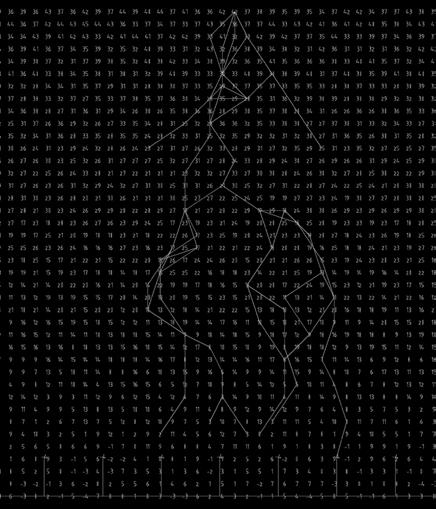
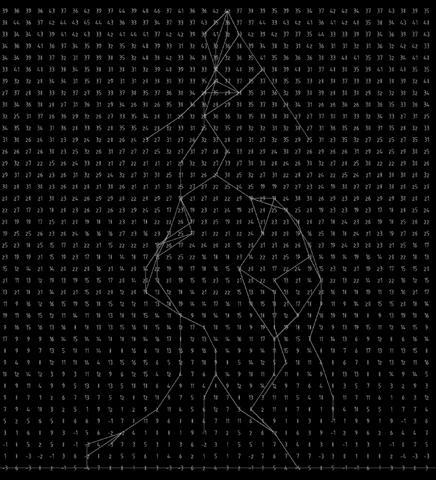
FULGURITES SIMULATION - STRUCTURE FORMATION
To create the fulgurites simulation the DLA was used. DLA, Diffusion-Limited Aggregation, is a process whereby particles undergo a random walk due to Brownian motion clusters to form aggregates of such particles.
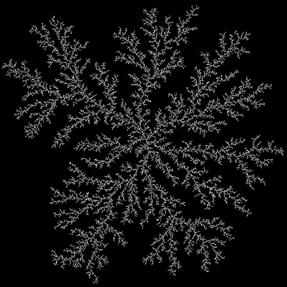
The moving point moves a tiny bit into a randomly chosen direction for each step. After the point is moved, it checks if there is any fixed point within a given distance. If there is no static point close by, the point moves again, choosing a random direction. If, after some steps, the moving point finds a static point within its vicinity. It turns into a static point itself and spawns another moving point.
RANGE
SIZE OF BRANCHES
SEED INT
DISTANCE BETWEEN PARTICLES NUMBERS
NUMBERS OF PARTICLES RADIUS
SIMULATION RADIUS SCALE
START/END SIZE DIFFERENCE
STRUCTURE FORMATION 1.0
The structure of fulgurites is a branch-like shape. By using the DLA algorithm, the branch formation could be created. The structure grows from the starting point and grows randomly in all directions. In this step, the controllable settings are size, distance, and numbers.
STRUCTURE FORMATION 2.0
In reality, the fulgurites are grown mainly from the top point where they were struck by lighting. To create the real-like simulation of the fulgurites, the starting point is on the top of the structure and then it grows downward. Moreover, the initial area always has a larger structure than the latter. Using scale settings it is possible to simulate the gradual change in thickness of the fulgurites structure.










